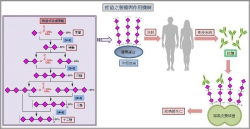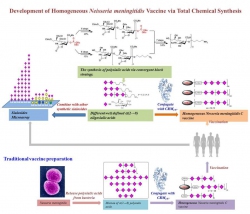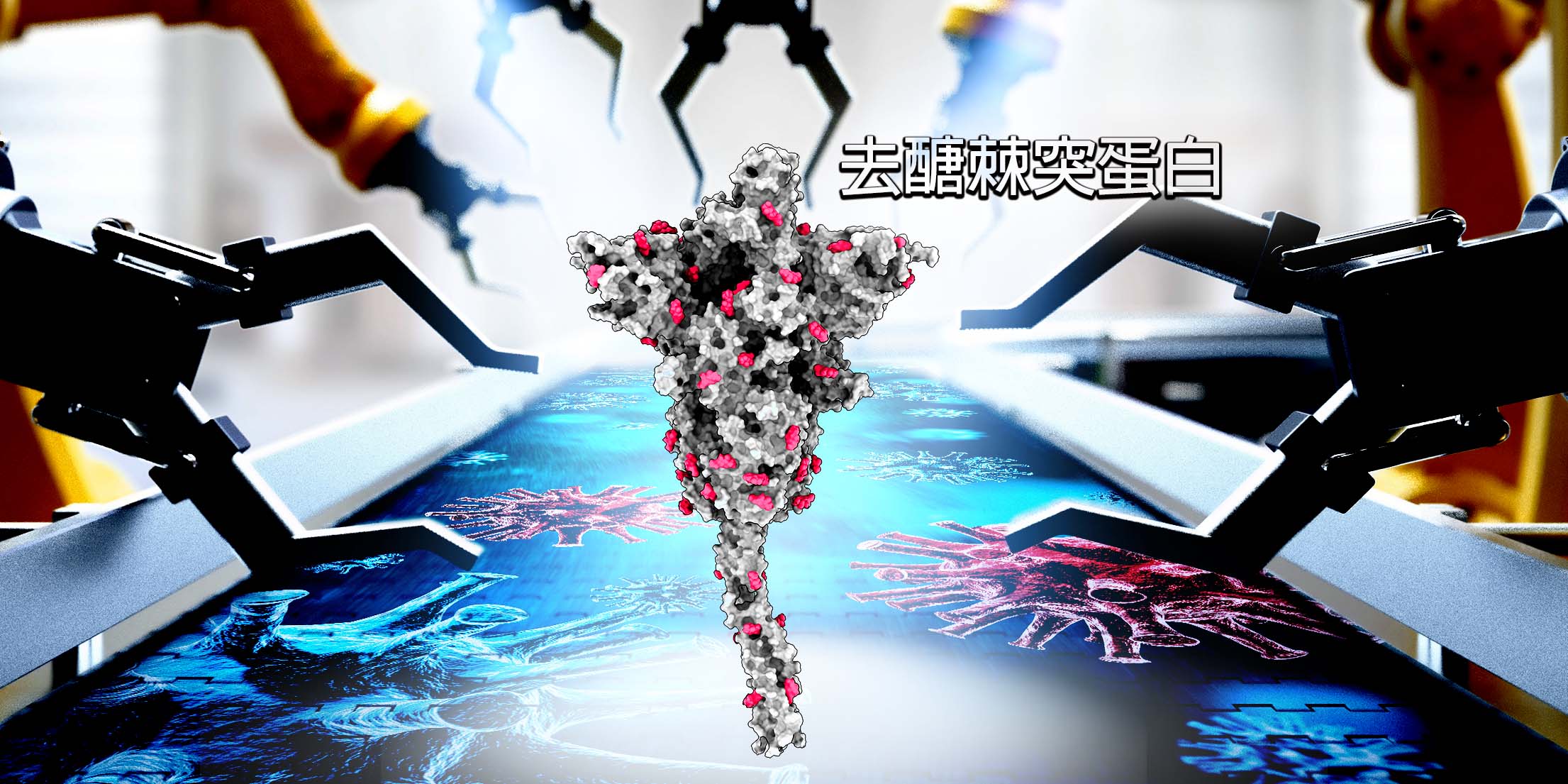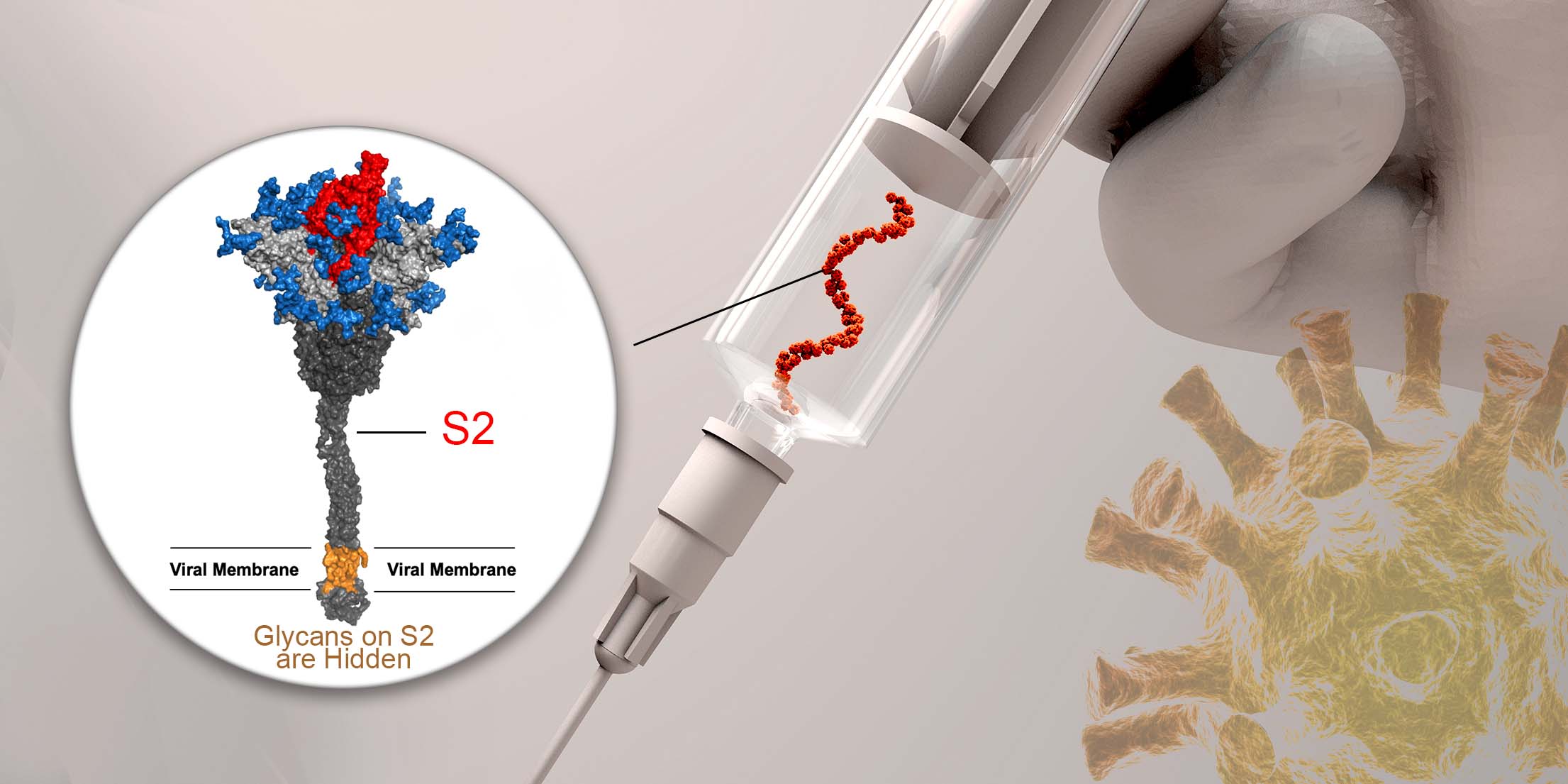
This research was also reported in the 09/21/2011 issue of C&EN.
A research team at the Genomics Research Center (GRC) led by Associate Research Fellow Chung-Yi Wu and Academia Sinica President Chi-Huey Wong has successfully synthesized several polysaccharides (α(2→9) oligosialic acids) that may be crucial to the development of better antibacterial vaccines. The research was published in the web edition of Angewdate Chemie, a leading chemistry journal, on August 29.

Preparation and Mechanism of Vaccine
Polysialic acids are useful in the development of antibacterial vaccines because they can be conjugated (joined) to a carrier protein as a vaccine to be administered to humans to induce a bactericidal effect. Up until now the polysaccharides used in vaccines have been isolated from pathogenic bacteria, but due to the difficulty in purification, vaccines may consist of polysaccharides of various lengths and possibly be contaminated with other antigenic components. These uncertainties increase the risks associated with the vaccine. If polysialic acids could be produced synthetically, such difficulties would be eliminated; however, because sialic acids have a unique structure that prohibits their reactivity and stereoselectivity, the chemical synthesis of naturally occurring polysialic acids is very difficult to achieve.
Before this study, the longest synthetic polysialic acid synthesized was a tetrasialoside (four-sugars). However, the polysialic acids have to be longer than octasialosides (eight sugars) to be biologically effective.
Postdoctoral Research Fellow, Dr. Kuo-Ching Chu, and Assistant Research Specialist, Dr. Chien-Tai Ren, both from the GRC, used a dibutyl phosphate sialic acid donor that was developed at the GRC two years ago in convergent block synthesis to create α(2→9) disialoside, tetrasialoside, hexasialoside, octasialoside, decemsialoside, and dodecasialosides (two-, four-, eight- ten- and twelve-sugars). The α-only polysialic acids were confirmed by Dr. Shih-Hsiung Wu, a distinguished research fellow in Institute of Biological Chemistry (IBC), and Dr. Chun-Ping Lu, a postdoctoral research fellow at the Institute of Biological Chemistry, using a combined enzymatic hydrolysis and high-performance capillary electrophoresis method.

Development of Homogeneous Neisseria meningitidis Vaccine via Total Chemical Synthesis
In addition to being potentially useful in vaccines, these polysaccharides with defined lengths are useful for studying the biological significance of polysialic acids. Dr. Chu has already used these polysialic acids to develop a N. meningitidis C vaccine candidate. N. meningitidis is a bacterium that can cause meningitis. If successful, this vaccine will be the first totally synthetic vaccine. In addition, the team led by Dr. Wu and President Wong has been applying their effective strategy to synthesize other two types of polysialic acids, α(2→8) and alternating α(2→8)/α(2→9), which are closely related to bacterial and cancer diseases, to further understand their biological roles and help develop vaccines with fewer impurities to fight meningitides and cancer.
The full article entitled “Efficient and Stereoselective Synthesis of α(2→9) Oligosialic Acids: From Monomers to Dodecamers” can be found online at the Angewdate Chemie journal website.
The complete list of authors is: Kuo-Ching Chu, Chien-Tai Ren, Chun-Ping Lu, Che-Hsiung Hsu, Tsung-Hsien Sun, Jeng-Liang Han, Bikash Pal, Tsung-An Chao, Yung-Feng Lin, Shih-Hsiung Wu, Chi-Huey Wong and Chung-Yi Wu
This project was financially supported by Academia Sinica and the National Science Council.




